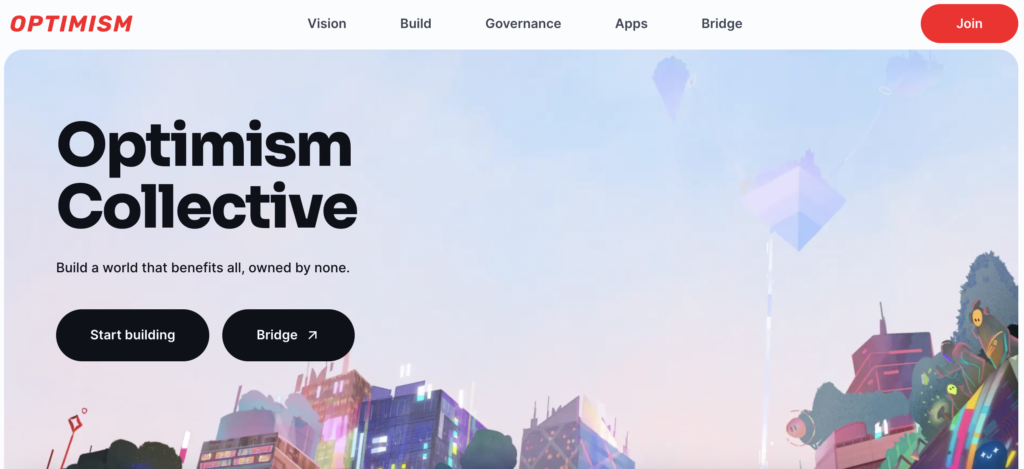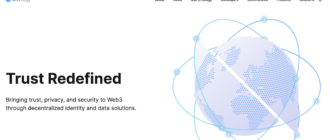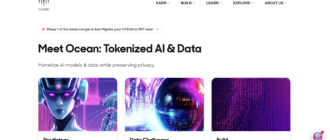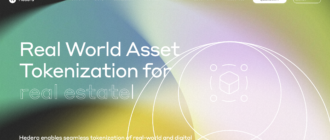Optimism is a Layer 2 scaling solution for Ethereum that aims to enhance the scalability and affordability of Ethereum transactions while maintaining compatibility with its decentralized applications (dApps). By using Optimistic Rollups, Optimism effectively executes transactions off the main Ethereum chain, ensuring lower fees and faster processing times without compromising security.

History of the Project
Optimism was developed by Optimism PBC, a Public Benefit Corporation that upholds the ethos of transparency and community-driven growth in the Ethereum ecosystem. The project began as a research initiative under the name “Plasma Group” which was focused on exploring scalable solutions for Ethereum. It pivoted to Optimistic Rollups and rebranded as Optimism. The team consists of experienced developers and researchers in the blockchain space, including former Ethereum Foundation members. Since its inception, Optimism has successfully launched on the Ethereum mainnet and has seen significant adoption by various dApps, fostering a robust ecosystem around its technology.
What is Optimism?
Optimism is designed to address the throughput limitations and high transaction costs of the Ethereum mainnet. As a Layer 2 solution, it functions parallel to the main Ethereum blockchain, using Optimistic Rollups to batch multiple transactions into a single one. This technology enables the Ethereum network to achieve higher transaction throughput and reduces costs, making it feasible for a wider range of applications, from gaming to complex financial transactions.
How Optimism Works?
Optimism is fundamentally built on a technology called Optimistic Rollups. This technology is a pivotal innovation that allows for scaling transactions on the Ethereum blockchain while retaining the security properties of the main chain.
Blockchain Structure
Optimism operates as a separate blockchain that is closely tied to Ethereum’s mainnet but maintains a distinct layer where transactions and smart contracts run. It utilizes a version of the Ethereum Virtual Machine (EVM) that has been modified to support the unique features of Optimistic Rollups. This compatibility with the EVM allows developers to deploy existing Solidity smart contracts to Optimism with minimal changes, fostering an ecosystem that leverages Ethereum’s mature development environment.
Consensus Mechanism
Unlike Ethereum’s mainnet, which uses Proof of Work (transitioning to Proof of Stake), Optimism does not rely on traditional consensus mechanisms like PoW or PoS for transaction validation within its network. Instead, it uses a system based on Optimistic consensus. This system operates under the assumption that all transactions are valid unless proven otherwise. In case of a dispute, a “fraud proof” can be submitted. Validators, who are stakers in the network, can challenge a transaction by providing evidence that it was incorrect. This challenge is then verified on the Ethereum mainnet. If a transaction is indeed found to be fraudulent, the challenger is rewarded, and the original transaction is rolled back.
Unique Features and Technical Specificities
One of the unique aspects of Optimism is its integration with Ethereum’s infrastructure, which allows it to leverage the security and decentralization of the mainnet while providing faster and cheaper transactions. The ‘fault-proof’ mechanism provides a safety net that maintains high security without the extensive energy and computational cost typically associated with blockchain consensus mechanisms. This approach not only ensures scalability and efficiency but also maintains a high degree of user and developer familiarity and compatibility.
What are Optimistic Rollups?
Optimistic Rollups are a Layer 2 scaling solution designed to improve the scalability and efficiency of blockchains, particularly Ethereum. This technology plays a critical role in managing the high costs and slow transaction speeds on the Ethereum mainnet by executing transactions off-chain while still leveraging the security guarantees of the main blockchain.
Core Concept
The “Optimistic” in Optimistic Rollups refers to the assumption that all transactions and state transitions are valid by default. Unlike traditional blockchain operations that require every transaction to be verified before being confirmed, Optimistic Rollups only perform computation and state verification if a transaction is specifically challenged.
How They Work
- Transaction Batching: Transactions are aggregated off-chain into a “rollup block.” This rollup block contains several transactions that would otherwise be processed individually on the Ethereum mainnet.
- Data Posting: The rollup block is then posted to the Ethereum mainnet as calldata, ensuring that the data is available but not executed on Ethereum directly. This reduces the burden on Ethereum’s computational resources.
- Fraud Proofs: After a rollup block is submitted, there is a challenge period during which the transactions included in the block can be disputed. If someone believes a transaction is fraudulent, they can submit a fraud proof. This proof initiates a process called a fraud check, which executes the disputed transaction’s computation on-chain to verify its validity.
- Finality: If no challenge is made during the challenge period, the transactions are considered valid. If a fraud proof is successfully submitted, the incorrect state is reverted, and the correct state is restored.
Advantages
- Scalability: By handling transactions off-chain and only interacting with the main chain to post data or resolve disputes, Optimistic Rollups significantly increase transaction throughput.
- Cost Efficiency: Reducing the computational load on the mainnet lowers transaction fees, making operations more cost-effective for users.
- Security: While providing scalability and lower costs, Optimistic Rollups maintain a high level of security by anchoring data to the main Ethereum chain and enabling fraud proofs.
- Compatibility: Optimistic Rollups are compatible with existing Ethereum smart contracts and developer tools. This compatibility reduces the barriers to adoption, as developers can deploy their existing dApps with minimal changes.
Use Cases
Optimistic Rollups are particularly beneficial for applications that require high transaction throughput and predictable fees, such as decentralized exchanges, gaming platforms, and complex financial applications in DeFi.
In summary, Optimism stands out in the crowded field of Layer 2 solutions by striking a balance between speed, cost, and security, making it a promising infrastructure for supporting the next generation of decentralized applications on Ethereum.
Tokenomics of Optimism
Nature of OP Token
The native asset of the Optimism network, the OP token, is a token, not a coin. This distinction is crucial as it signifies that OP does not have its own blockchain but operates within the Optimism ecosystem layered on top of Ethereum, utilizing Ethereum’s security and network effects.
Emission Model and Distribution
The OP token’s emission follows a predetermined schedule designed to support network growth and sustainability. The total supply of OP is capped, with a portion allocated to community initiatives, development, and the decentralization of the network governance through a progressively increasing distribution to public stakeholders. This approach encourages long-term participation and investment in the ecosystem.
Role and Utility
OP tokens are multifaceted in their utility:
- Governance: OP holders have the right to propose and vote on network upgrades, changes in parameters, and community treasury allocations. This mechanism fosters a decentralized governance structure that aligns with the ethos of the broader Ethereum community.
- Staking: Tokens can be staked in the Optimism network, contributing to network security and entitling stakers to receive rewards. This staking mechanism is integral to maintaining the integrity of the network’s fraud proof system.
- Fee Payment: Transaction fees on the Optimism network are payable in OP tokens. This not only ensures the utility of the token but also its circulation within the ecosystem.
Economic Impact and Token Price Dynamics
The OP token’s value is influenced by several factors including network adoption, transaction volume on Optimism, and the broader market conditions of the crypto industry. As Optimism continues to grow and more dApps deploy on its network, the demand for OP tokens for transaction fees and staking could increase, potentially affecting the token’s price positively. Additionally, governance decisions made by OP holders can directly impact the tokenomics by altering staking rewards or fee structures, which in turn affects the token’s market dynamics.
In essence, the OP token’s economic structure is designed to support the overarching goals of the Optimism network: scaling Ethereum while ensuring a decentralized, secure, and user-driven ecosystem. This careful planning of token distribution, coupled with its multiple utilities, positions OP to play a pivotal role in the long-term viability and success of Optimism.
Where to Buy the OP Token?
The OP token is available for purchase on several leading cryptocurrency exchanges, ensuring accessibility for users worldwide. Here are some of the exchanges where you can buy OP:
- Binance: As one of the largest and most popular cryptocurrency exchanges globally, Binance offers robust trading options for OP, including spot and futures markets.
- HTX (formerly Huobi): Known for its extensive range of cryptocurrencies and security features, HTX provides a reliable platform for buying and trading OP.
- MEXC: Offering a variety of trading pairs, including OP, MEXC is known for its user-friendly interface and efficient trading systems.
- Bybit: This exchange is favored for its advanced trading features and strong liquidity, making it an excellent choice for trading OP.
- KuCoin: Known for supporting a wide array of cryptocurrencies, KuCoin is a popular choice among traders looking to buy or trade OP.
- Bitfinex: With a long-standing reputation in the cryptocurrency community, Bitfinex provides detailed trading options and high liquidity for OP transactions.
Where to Store the OP Token?
When it comes to storing the OP token, security and accessibility are paramount. Here are some recommended wallets that support OP:
- MetaMask: This Ethereum-based wallet is widely used for interacting with decentralized applications. It is easy to use and integrates seamlessly with most web browsers and mobile devices. MetaMask allows users to store and manage their OP tokens directly within the wallet, which can also be used to interact with the Optimism network.
- Ledger Nano S/X: These hardware wallets offer enhanced security by storing your OP tokens offline. Ledger wallets support the Ethereum blockchain and, by extension, all ERC-20 tokens including OP. They are ideal for those seeking robust security for their digital assets.
- Trust Wallet: This mobile wallet supports a wide range of cryptocurrencies, including OP. Trust Wallet provides a secure and user-friendly option for storing tokens and also facilitates easy access to decentralized applications on the Ethereum network.
- Argent: Known for its simplicity and security, Argent is a mobile wallet designed specifically for Ethereum-based tokens. It allows users to store OP and offers features like wallet recovery without needing a private key, making it a secure and convenient choice for less technical users.
These wallets offer a range of security features and conveniences, catering to different levels of technical proficiency and security needs. When choosing a wallet, consider factors such as control over private keys, security features, ease of use, and compatibility with other cryptocurrencies.
Future Prospects and Development Forecast
The growth trajectory of Optimism is underpinned by several key factors that position it as a significant player in the blockchain scalability space. Its integration with Ethereum, ease of use for developers, and strategic partnerships are central to its expansion.
Growth Drivers
- Scalability Solutions: As Ethereum continues to be the primary platform for decentralized applications, the need for effective scalability solutions becomes increasingly crucial. Optimism addresses this demand with its Optimistic Rollups, which significantly reduce gas costs and improve transaction throughput.
- Developer Adoption: The compatibility of Optimism with the Ethereum Virtual Machine (EVM) allows developers to deploy existing Ethereum applications to Optimism with minimal changes. This ease of transition is a critical factor in attracting developers and projects.
- Community and Governance: The decentralized governance model of Optimism, facilitated by the OP token, actively involves the community in decision-making processes, which enhances user trust and project legitimacy.
Key Clients and Partners
Optimism has formed partnerships with various prominent entities in the blockchain space, which not only enhances its credibility but also expands its user base. Some notable partners include:
- Synthetix: One of the first major DeFi platforms to integrate with Optimism, using it to scale its decentralized synthetic asset issuance.
- Uniswap: The popular decentralized exchange utilizes Optimism to reduce trading fees and improve transaction speeds for its users.
- Chainlink: By integrating with Optimism, Chainlink provides reliable, tamper-proof data for smart contracts on the network.
Development Forecast
The development forecast for Optimism is highly positive, with expectations of increased adoption as the broader Ethereum ecosystem continues to expand. As more developers look for cost-effective ways to run their dApps, Optimism’s user-friendly platform is well-positioned to be a preferred choice. Additionally, ongoing improvements in cross-chain interoperability and new features in the pipeline promise to enhance its functionality and appeal.
The Ecosystem of Optimism
The ecosystem surrounding Optimism is rich and diverse, consisting of various projects spanning DeFi, NFTs, gaming, and more. Some key components include:
- DeFi platforms: Besides Synthetix and Uniswap, other DeFi projects like Aave and Curve have also adopted Optimism to leverage its scalability benefits.
- NFT Marketplaces: Platforms like Quixotic and BoxSwap use Optimism to facilitate faster and cheaper NFT transactions.
- Gaming and Metaverse: Games and metaverse projects are increasingly looking to Optimism to manage the high transaction volumes required for interactive and immersive digital experiences.
In conclusion, the future of Optimism looks promising with its solid technological foundation, strategic partnerships, and a growing ecosystem that supports a wide range of applications. Its role as a vital component of the Ethereum scaling solution landscape is likely to expand, driving further innovation and adoption in the blockchain community.
Conclusion
Optimism represents a critical piece in the evolving puzzle of blockchain scalability. With its innovative use of Optimistic Rollups, compatibility with Ethereum’s rich ecosystem, and a growing community of users and developers, Optimism is poised to play a pivotal role in the future of decentralized applications and smart contract deployment on a larger scale. For advanced users and investors in the cryptocurrency space, understanding and potentially participating in the Optimism ecosystem offers a promising avenue for both technological engagement and investment.






